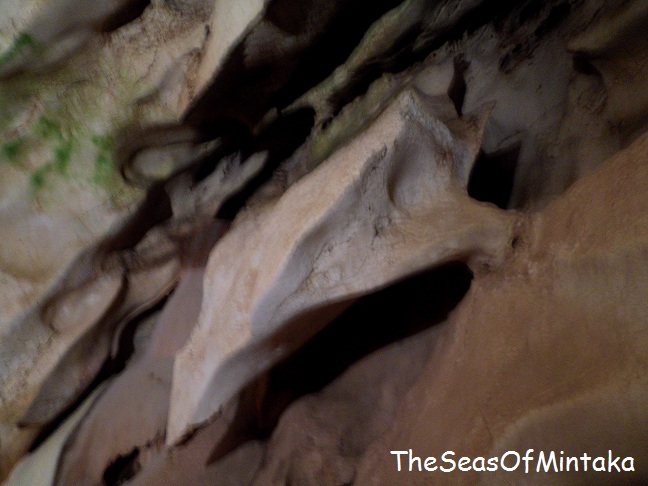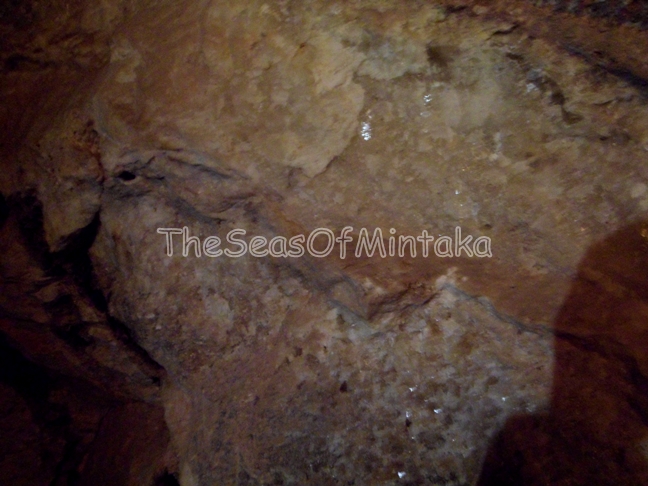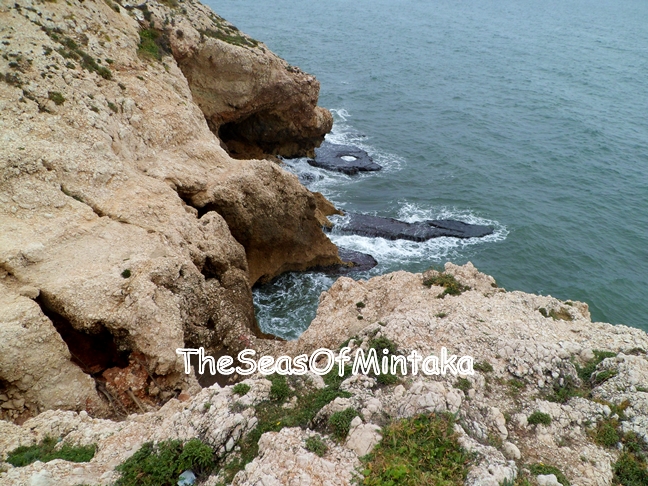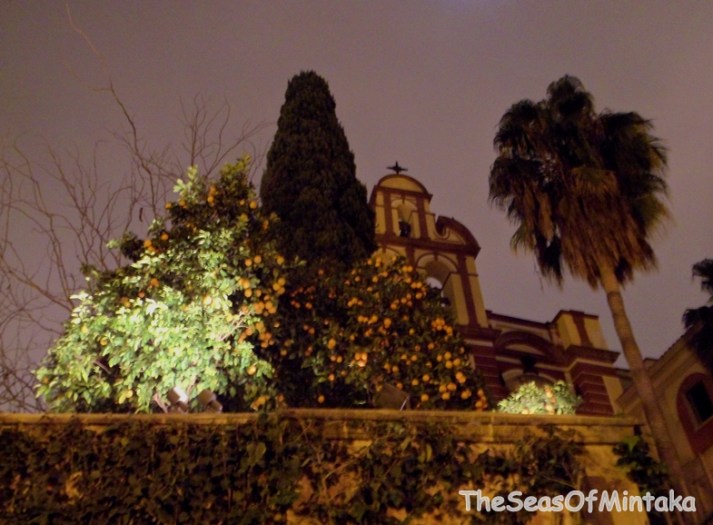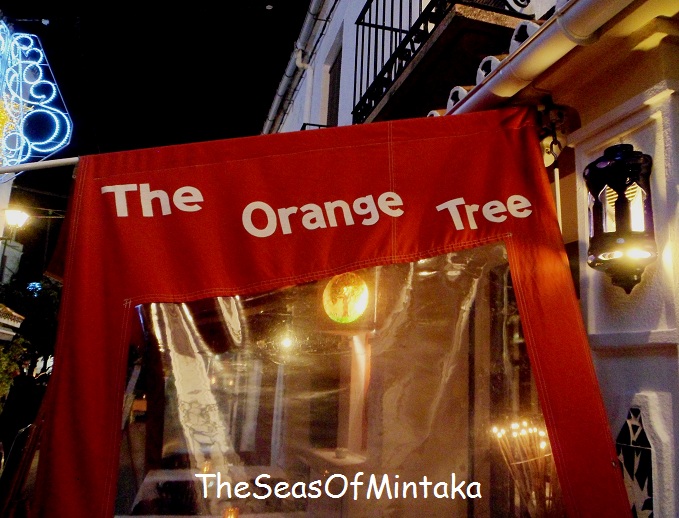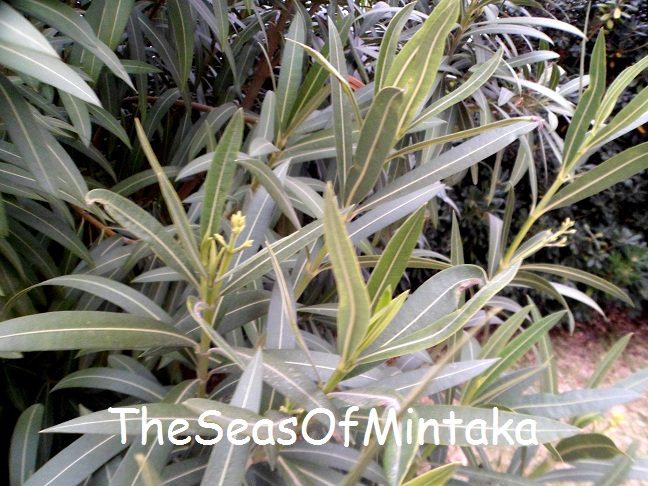I’ve been sitting around noticing how expats often blog about the differences between life in their new country and life in their country of origin.

(I’ve also been noticing how widespread it seems that bloggers who have never left their own country just naturally assume that everything is going to be exactly the same in all the rest of the world as it is in their own country. I would LOVE to be able to inform them that not everyone around the world has access to The Vitamin Shoppe, and that we can’t all order online from US internet sellers, but anyways…… And those people who run blogs like that would never read this one……)
But anyways, so I thought I’d do something similar. Now, taking into account, however, that I’ve been living in Spain for so many years, it’s almost more like my own country than my real own country. But even so, there are several things that do jump out at me, so let’s go, on with the list:
* One of the very first things that struck me is how different ordinary, everyday objects can be. Door handles, toilet bowls, light switches and, of course, electrical outlets. In Canada everyone has round door handles. That’s just the way door handles are made there, I guess that’s how Canadians like it. Here, however, door handles are long. I actually like them better here, the round ones are always slipping out of your hands whereas here, you’ve got something you can really get a good grip on! (They also make great hooks for hanging stuff on.)
* In Canada, there’s only one way to flush a toilet bowl: using a little lever on the front of the tank that sticks out a little to one side. Here, on the contrary, there are so many different contraptions each with their own way of flushing. The first toilet bowl I ever saw here had nothing but a little ball on top of the tank. What in the world are you supposed to do with a little ball?? I tried spinning it around, pushing on it, edging it in one direction and another, all to no avail. At some point (probably when people were starting to wonder whether I had actually fainted or something in the bathroom) it occurred to me to pull on it! Wonder of wonders, it worked!
* The bidet. Does anyone reading this have a bidet? (I, of course, do not, seeing as I live in a minuscule, cramped one-bedroom-with-a-walk-in-closet-as-the-second-bedroom.) The first time I saw one I didn’t know what it was, or what you were supposed to do with it. Was it some sort of strange, low-level wash basin for little kids to wash their hands and faces in? Was it a weird sort of toilet bowl, maybe? In the end I myself ended up using it to wash things (like clothes) by hand, very useful for that sort of thing.
* Spain is very, very urban, compared to Canada. Even in a major city in Canada all sorts of wildlife prowl the streets: hares, chipmunks, racoons, skunks and even the occasional red fox, not to mention the ubiquitous squirrels of every colour. I expected to find bulls roaming free in the streets of Madrid at the very least, and yet it turned out to be one of the most urban, built-up, concrete-and-cement jungles I’ve ever encountered. You can travel for miles (well, several blocks anyways) without seeing one little piece of greenery. And animals? The only thing you will find is a pigeon.
* I suppose every expat in Spain must have noticed this but I will mention it anyways: the total (or almost total) lack of foreign goods and imported products (with the exception, of course, of electronics like computers, Nintendos, Wii’s……). The list of foods you can’t get here in Spain would be so long it would probably cover reams and reams of paper. You can’t get a lot of make-up either, unless you are really into mass-produced junk churned out by companies that test on animals like L’Oreal, or elitist little venues that charge a fortune for a tiny vial of something, like L’Occitane or La Mer. (Now, having said this, I still won’t deny that even so I would still LOVE to be able to get my hands on something from L’Occitane one day, just to try it out!) Now, I do realize that slowly all of this is changing. From what I’ve been reading, famous companies like BeneFIT and Nars finally seem to have made the discovery that Spain exists and that it actually has women, who use make-up. Hopefully more low-cost-but-good-quality US brands like ELF will one day follow suit, so that us “poor” women who don’t want to patronize animal testers can still afford to look good.
* Schools. Well, I don’t find schools a whole lot different here from in Canada. Sending kids to school is a tradition that dates back millennia, so I don’t suppose it is all that different now from one hundred years ago or from one continent to another. The curricula is also not that radical. Kids learn the basics everywhere, reading, writing and arithmetic. Throw in a bit of algebra and science. The one thing that has changed enormously, is the role of computers in the classroom – but that has to do with the times, not with the country.
* I find schools A LOT more secure here than in Canada. In Canada, anyone, like a maniac with a gun, can just wander into a school and when the kids leave, they just leave. Any creep can pick them up off the streets before their parents arrive. Here a teacher or monitor will personally hand the child over to the parent when s/he arrives, and not to anyone else. It can occasionally lead to paranoid moments, when for example a new teacher or monitor doesn’t know who you are, and refuses to hand your child to you because she doesn’t recognize you! And speaking of parents, in Canada most kids travelled to school by bus, in those famous yellow school buses, at least in my experience. Here, however, school buses are quite rare and parents themselves must pay for them. Most kids are personally brought in to school by their parents, no matter how far away they live.
On the other hand, school buses here are quite the luxurious item. We had to travel squeezed tightly into these cramped, dirty (well, the ones I travelled on were always dirty) yellow school buses while European kids breeze along in their airy, spacious, top-of-the-line luxury coaches. I always want to ask them if they realize how lucky they are to be able to go to school in one of those, which always look clean, and there is room for them to put down their backpacks and stick out their feet.
* Most things, in general, are just generally a lot more tightly controlled here in Spain than they are in Canada. That is, I think, both good and bad. The good thing is that not just anyone can have access to things and people here the way they do in Canada. For example, if you are in a hospital and someone is trying to kill you, it would be very easy for them to pay you a visit in Canada. But here, who can enter into a hospital room to visit a patient is very restricted. When my mother-in-law was in the hospital she was only allowed to receive visitors for two hours a day, only one visitor at a time and no children were allowed to see her. I thought that was extraordinarily sad, the people she wanted most of all to see were her grandchildren. In Canada, on the other hand, a whole bunch of us including babies could pile into a patient’s room, much to the patient’s great joy and relief.
Because Canadians don’t have ID cards, that sometimes makes things harder in Canada and sometimes easier. It’s harder, when (in Canada) a person is very paranoid and won’t let you have something unless you can produce about thirty documents that prove that you are who you say you are. Since there really is no norm in Canada that states that you must identify yourself a certain way, in other places you don’t have to do anything to prove that you are who you say you are. It all seems to depend mostly on the establishment’s own personalized, rather haphazard policies.
* Stores. Need I say it, it is a lot harder to buy anything in Spain, and generally a lot more expensive too. In Canada, we had all sorts of cheap-o shops where you could get things for a dollar or two (and I’m not referring to dollar stores). Drugstores sold make-up (and not exactly from China either) for a dollar or two. We had Zeller’s (which may not exist anymore) and Woolco (which I think has since been bought up by Walmart) where everything was cheap. Pyjamas for the kids were cheap. Shoes for the kids were cheap. Shampoo was cheap. Diapers were, perhaps, the only thing that wasn’t cheap there! You’ll never find something like that here in Spain!
* Convenience. Living in Spain is like about a hundred times more convenient than living in Canada! In a Canadian city, you might have a grand total of perhaps THREE or at the most FOUR large supermarkets in the entire area, usually located in distant suburbs and generally requiring the use of two urban buses in order to arrive at the location. In Canada, most cities are divided into residential neighbourhoods and commercial districts, which makes the term “shopping in your own neighbourhood” a bit irrelevant. I LOVE being able to just hop downstairs when I want some bread or milk, rather than have to hop onto two buses for some bread and milk. (Well, of course, since I went to the trouble of hopping onto two buses and riding for perhaps two hours, I would of course buy more than just bread and milk, but I hope you get the picture.)
* Employment (hehe, this subject had to come up, of course!). Quite frankly, getting a job is a lot easier in Canada than in Spain. Not because it’s richer or has a great, booming economy (which it doesn’t, like every country in the world, it’s in crisis). The reason is because employers here in Spain are just so **** demanding! You can’t even work in a f***g McDonald’s here without possessing at least three different types of professional certifications and presenting about thirty references.
Basically, in order to work at the counter at McDonald’s here, you would need something similar to an MBA from Harvard, a few internships in a variety of different large corporations and a couple of courses of “Manipulador de alimentos” which you would, of course, have passed with flying colours (and be in possession of the official, government-issued certificates to prove it, too). Then later Americans ask me why don’t I just get a job at McDonald’s, since apparently in the US McDonald’s will just hand the position over to the first person who waltzes in off the street and asks for it. They say, after all, I don’t need any qualifications to work at McDonald’s, right, and anyone can do it? Snort snort! That must be in the States, because here……!
What kids habitually do in Canada such as delivering newspapers, selling lemonade or babysitting for a bit of small change would be considered child labour here in Spain, which is, of course, illegal. Here, you are supposed to leave your kids with a responsible adult (ie. over eighteen years of age) or you would be considered a negligent parent. So asking your thirteen-year-old little niece over to watch the toddlers for a couple of hours just wouldn’t cut it here. (A lot of people do it here, however, which is okay as long as nobody knows about it and can report them to the police.) In Canada a lot of kids begin working at the age of fourteen in shops and boutiques to earn a bit of spare change because probably their parents refuse to give them money for clothes or entertainment and you know, a teenager without the latest fashion or being able to go out to the pub is one very sad teenager indeed!
* And of course, there are, I think, a lot more ways to save money in Canada than in Spain. There, you can have garage sales, buy on Craigslist or get your clothes at the Salvation Army. I know there is a thing here in Spain called Segundamano, which is supposed to be like Craigslist, but the few times I’ve looked at it it was practically empty, except for a rush of ads in the “Personals” sections. In Spain, I find that there really isn’t as much of a culture of “second-hand” or “one man’s garbage is another man’s treasure” sort of thing. People tend to throw things away into the bin rather than give them away and there appears to be a bit of a stigma around using second-hand items (except for electronic items). No one wants to buy their clothes second-hand here, for example, whereas in Canada even very respectable, professional women had no qualms about shopping at the Salvation Army.
* Sales taxes. Well, the only thing I can say about that is that Rajoy has probably been eyeing Canada a lot lately and trying to learn from Canadians. Maybe he figured, if he started charging taxes like the ones they do in Canada, Spain would somehow magically transform itself into a country similar to Canada? (Well, with taxes like that, I can certainly understand why Canada doesn’t have Spain’s debt.)
And then, the worst thing is, that in Canada sales taxes are not included in the listed price for an item. So when you’ve filled up your basket with all the goodies that you would like to take home with you, you take it to the cashier, who then passes it through the cash register which performs some sort of complicated, algorithmic calculations and then spits out at you the amount of tax that you must pay in addition to the cost of the items that you wish to buy.
So, now your modest little basket, which perhaps summed up to be about ten dollars when you were just looking at the price on the price tag, has now suddenly jumped up to perhaps a whopping twenty-five dollars! (Well, maybe I’m exaggerating a tad bit, but not much.)
* Efficiency and productivity, especially in the workplace. Ever wonder why it takes at least five times longer to get anything done in Spain than it does in Canada?
The other day I was at the unemployment office here in Malaga. I was observing human behaviour. There was only one information counter and just one young guy manning that counter. He answered the queries from a couple of understandably confused people, then waltzed off to the back of the large office with a slip of paper, supposedly in order to file the paper away in its proper place. Well, so far so good, right?
He tucked the paper away succinctly into its proper file, then turned around. Did he turn around in order to return to the information counter? Of course not!
He actually turned around so he could chat with his co-workers who happened to be conveniently seated near the file cabinet he had just used. After chit-chatting for a space with these co-workers, he advanced a couple of steps towards the front of the office, then stopped to chit-chat with the next co-workers in his path. He did this at every step he took and as you can imagine, since it was a government office, it was filled with employees to chit-chat with.
Eventually, he was joined by a young lady who apparently had similar ideas to him, and they both took up a post somewhere in the centre of the office just chit-chatting and discussing whatever happened to be on their minds, together. They stood there for about fifteen minutes, talking animatedly, while the line-up before the (now unattended) information counter grew longer and longer. No one else bothered to attend to these people, and no one said anything to the young man who was supposed to be attending to the counter, either.
Eventually, the young man and his co-worker strolled casually back towards the information counter. They lingered a while longer next to the information desk so that they could conclude their rousing discussion before the employee started attending to the people in the line-up.
I have an acquaintance who owns a company that is going down the drain. One day I wandered into their office for a visit. He just happened to be berating an employee of his at that moment. His words, more or less, went something like this:
“You want to know what you’re doing wrong, and why I’m mad at you? You arrive every single day ten to fifteen minutes late! Then, every time I send you out on an errand, you have to go to a bar and have a drink before you return to work. It only takes you ten minutes to take the document to the address that I gave you, so why does it take you half an hour to get back? Because you’re spending twenty minutes in the bar!”
To which the young man replied, non-plussed: “Well, but I have a right to take a break, don’t I?”
I asked my acquaintance why he didn’t just fire this lazy dead-beat, but he said it wouldn’t have made any difference, because everyone he hired did the same thing. That’s just what people are like, and how they expect to behave, around here in southern Spain.
* All the things which are traditional and “home-grown” are, of course, easily and readily available here in Spain, such as (in my case, as these are the things I use a lot): sweet almond oil, anything with chestnuts in it (I *heart* my raw chestnut honey, lol!), olive oil OF COURSE, I mean, we are in the heart of olive land, right?
However, if you want anything that must be produced in another country, then you would be fairly outta luck here, as Spaniards seem to be allergic to importing things (except things like computers, Nintendos, mobile phones……).
So, in conclusion, is life better or worse in Spain or in Canada? Well, I don’t think it’s either better or worse, it’s just different. And I guess it also depends, too, on what sorts of things you like, personally.
If you enjoyed this post (I really hope you do!), maybe you will also like:
Blog About Blogs and Blogging
Happy Giant Cockroach Hunting!
Flowers For the Dead on the Day of The Dead
La Línea de la Concepción



